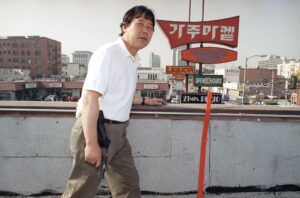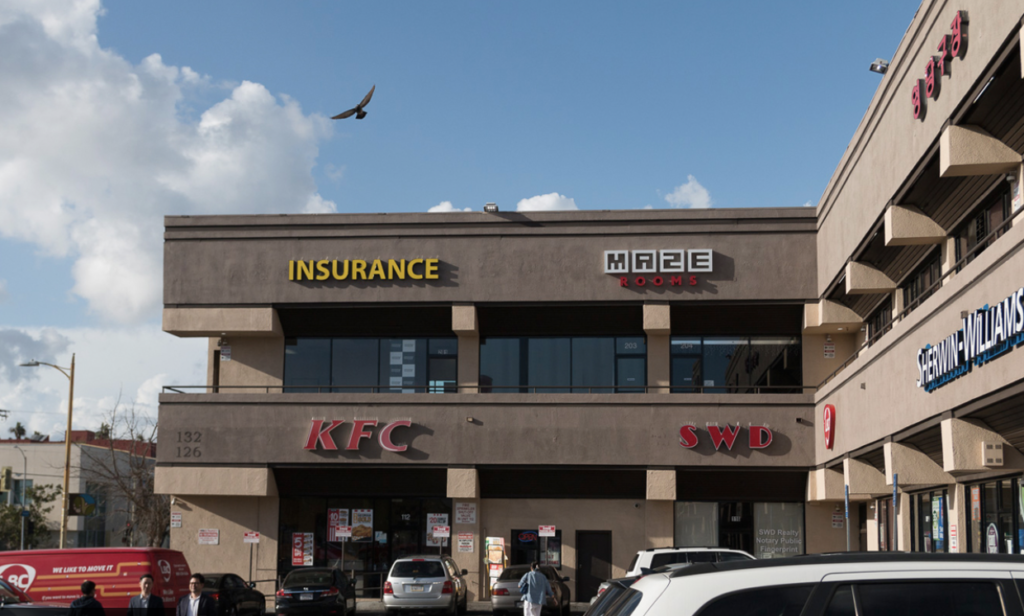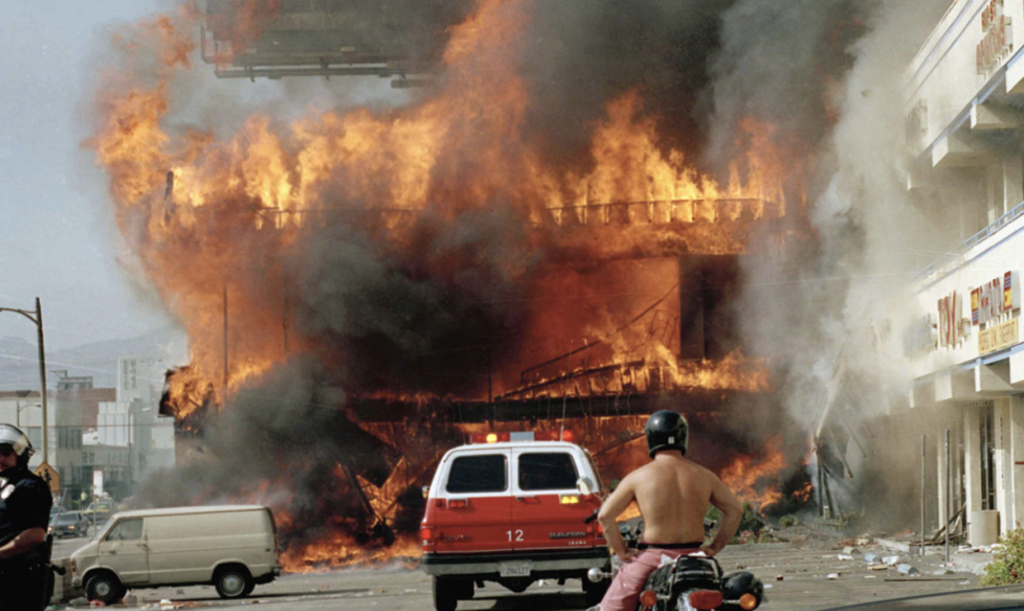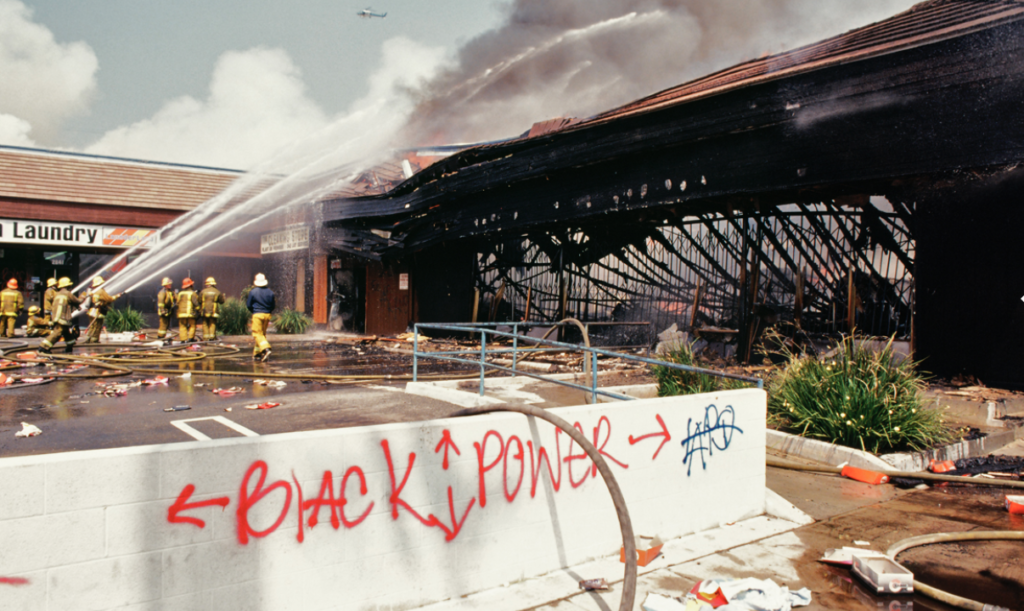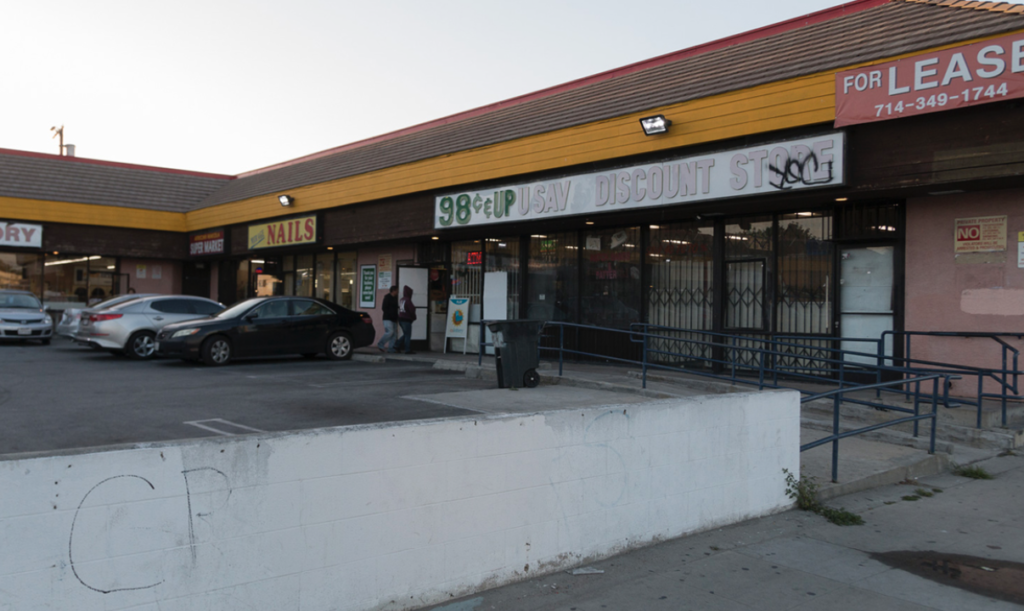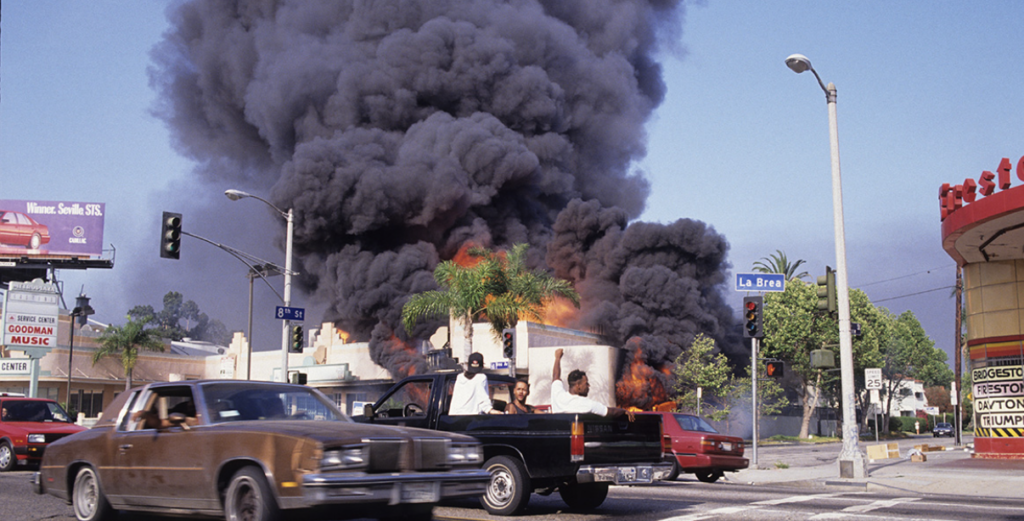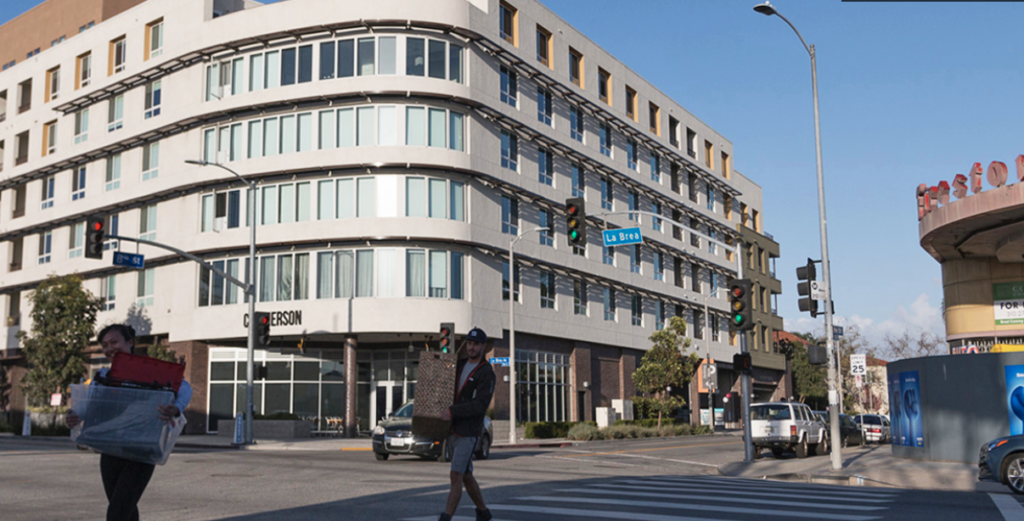Introduction
My archive brings a Korean American perspective of different insights and new understandings on the Los Angeles Riots in 1992. For those who are unfamiliar, Los Angeles Riots were a series of riots, looting, arsons, and civil disturbances that occurred after a jury freed four officers without punishment for their excessive force to arrest and beating of Rodney King, an African American, which were publicly broadcasted on TV. Riots were so overwhelming for the local police in LA that the government had to step in and bring army reinforcement to bring back peace and order. The end was horrific as many people were killed, injured, and arrested. One might think how the issue of African American inequality and police brutality connects with the Korean American community. The riots took place in many parts of Los Angeles and Koreatown was one of them where there's a huge population of Koreans. Many of the businesses were destroyed. Unsettling tension and frustration were felt from the unforeseen riots. It was a time of chaos and discouragement for the Koreans.
As a Korean American from California, I want to shed some light onto how the Los Angeles Riots impacted the Korean American community in Koreatown negatively because I feel that there's not enough spotlight for the emotional and economic hardship that they experienced. Many of the business being destroyed meant that their American Dreams were shattered because they came to America to become successful economically. They were also killed or injured while protecting their businesses from looters and a majority of them were young who were asked for help because many of the store owners were old. Ultimately, I hope this archive serves as a reminder for the future younger generation of Korean Americans to acknowledge about this part of Korean history in America as I only knew about this recently.
For my archive, I specifically collected photographs and videos about the Korean American perspective during the LA Riots. All of the materials are obtained from DPLA and other online credible news sources.
Navigating the Archive
As you scroll down, you'll encounter a couple of technical functions that displays the images and videos such as the gallery slider. To navigate the gallery slider, click the arrow that's pointing to the right on the right side of an image. This will transition into another image. To navigate the embedded youtube video, click the video to play/pause. There will also be a purple colored text which is the hyperlink to a video that you need to simply click and then it will take you to the video on a new tab.
Photographs of Korean Americans during the LA Riots
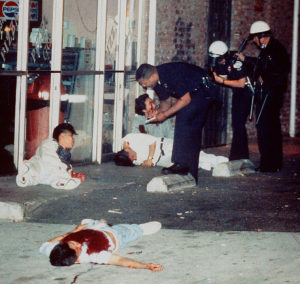
Edward Song Lee, 18, foreground, was shot to death and three other Koreans were injured in an exchange of gunfire with looters at 3rd and Hobart streets in Koreatown on April 30, 1992 in Los Angeles, California. Police questioned the survivors of the attack who were shot while trying to protect a Korean-owned pizza parlor.

Korean storeowners defend their property as gunfire breaks out in Koreatown at Western Avenue and 5th Street in Los Angeles, California.
This gallery contains three photographs of Korean Americans in Koreatown during the Los Angeles Riots. Using the gallery slider, click the right pointed arrow located on the middle of the image's right side to go to the next image. To view the previous image, click the left pointed arrow located on the middle of the image's left side.
Korean Businesses Targeted During LA Riots
Taken from NBC News, this video reports about the negative impact on Korean businesses as they were burned or destroyed during the LA Riots in 1992. However, Koreans were It also addresses a story about a light sentencing on a Korean store owner that fatally shot an African American teenage girl that brought African Americans to anger. The death of the girl is unfortunately tragic but in store manager's defense, she was punched severely. This brings out an unspoken tension between the African American community and Korean American community that rose when the Koreans started many businesses in LA which threatened the economic stability and territorial spaces of African Americans.
Then and Now Photographs of Korean Businesses
These photographs are divided into 3 gallery sliders that show "then" and "now" photographs of the Korean businesses that were impacted by the LA Riots. Using the gallery slider, click the right pointed arrow located on the middle of the first image's right side to transition into the second image. The first image was taken during the LA Riots. The second image was taken in 2017. We can see how quickly the businesses redeveloped after 25 years as if nothing happened to them.
Koreatown strip mall on Vermont Avenue near 1st Street
After the Chaos
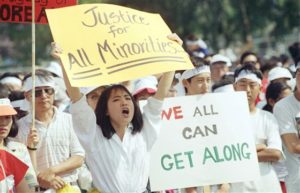

These photographs are taken from the march after the LA Riots in May 2, 1992 to call for peace among the minority groups in America and support in rebuilding the destroyed businesses in Koreatown.
The third video of the "Footages and Interviews About the LA Riots": https://archive.org/details/calavc_000010/calavc_000010_t3_access.HD.mov
Among the five videos, the third video contained an interview of a young Korean American on how the LA Riots impacted him. He shares a story how one of his relatives' business was burnt and what must be done for the Korean American community to do after the LA Riots. The other videos contained interviews on soldiers, police, and residents of different ethnicities.
Conclusion
Although the Los Angeles Riots 1992 was sparked by a racial issue, the most striking aspect was that the riots targeted Korean owned businesses to be destroyed and burned in central Los Angeles. The riots brought awareness for the Americans to the huge Korean American population presence in Southern California and the Korean owned businesses. To the Korean Americans, the LA Riots symbolized a broken "American Dream" and brought importance on economic success and social inclusion in American society. Also it taught them to be politically active and stand for their representation in social and ethnic issues. From what my uncle who lived in Koreatown during the LA Riots told me, he felt that Korean Americans weren't necessarily feeling bitter towards the African American community or other minority groups. They rather wanted peace and bring community to all the minority groups so that we can all work together to fight for our values and beliefs. In fact, he told me that the riots were not entirely done by African Americans. There were Latino Americans and other minorities that were involved in the riots.
References Cited
1. Five videos of interviews on the LA Riots and raw footages of the peace march in Koreatown are from DPLA
2. Lah, Kyung. “The LA Riots Were a Rude Awakening for Korean-Americans.” CNN, Cable News Network, 29 Apr. 2017, www.cnn.com/2017/04/28/us/la-riots-korean-americans/index.html.
3. Avila, Willian, and Sean Myers. “Then and Now: Compare Scenes From the LA Riots.” NBC Southern California, NBC Southern California, 25 Apr. 2017, www.nbclosangeles.com/news/local/LA-Riots-Then-and-Now-Interactive-419996793.html.
4. Campbell, Andy, and Matt Ferner. “What Photographers Of The LA Riots Really Saw Behind The Lens.” The Huffington Post, TheHuffingtonPost.com, 1 May 2017, www.huffingtonpost.com/entry/photographers-los-angeles-riots_us_5902c4ffe4b02655f83b5a86.
